Creating the Future Workforce at Lincoln Electric
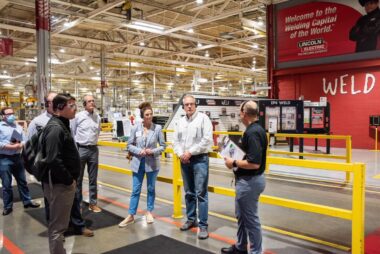
Lincoln Electric has a long and storied history since its 1895 founding in Cleveland, Ohio, as a manufacturer of electric motors. Today, it is a global industry leader in welding equipment and consumables, additive manufacturing, and automation solutions, and has expanded across 19 countries worldwide and serves customers in over 160. But how does Lincoln keep a connection with its origins through a continued spirit of innovation and learning?
Lincoln Electric first opened its welding school in 1917 and a century later launched its state-of-the-art Welding Technology & Training Center, in 2018. This 130,000-square foot facility includes training stations for virtual welding, where all students start their introduction to welding, and more than 150 training booths for learning on the real ‘arc’. There are classrooms to accommodate both live and online instruction.
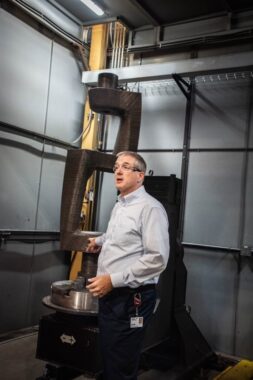
Lincoln Electric’s welding training is given to its new employees and external welding students. In addition, Lincoln also offers both turnkey and custom welding training curriculums and courses for customers to help them upskill their professional welders to achieve specific business targets and goals. They also offer a “train the trainer” course for welding instructors to ensure today’s students are getting the most up-to-date instruction to be industry-ready.
MLC members were given a first-hand look at Lincoln Electric’s headquarters in Cleveland at a recent plant tour that included visits to the welding training center in addition to the company’s machine division, where it builds welding equipment and consumables, as well as its large-scale additive business (3D printing) and their automation solutions.
Lincoln Electric is proud to have a high-performance culture that recognizes and rewards success and provides employees with opportunities for growth and development. The company’s Incentive Management System (IMS) for the production workforce includes piece work pay to maximize personal earnings potential, an annual profit-sharing bonus, a no-layoff policy, and an open-door policy including an employee-represented advisory board, who regularly meet with management to discuss various HR and operational matters. The IMS has been studied by the Harvard Business School and is one of the school’s top-selling case studies.
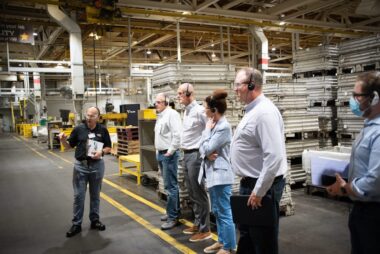
Lincoln Electric’s state-of-the-art, large-scale metal 3D printing solution is an extension of its automation, software development and metallurgical expertise, which has been applied to an additive process. The company’s additive solutions center is the largest platform of its kind globally with 18 3D printing cells which are used primarily to print replacement parts, molds, tooling and prototypes that measure up to eight feet in length and weigh more than 8,000 pounds – and are printed in a variety of metals including mild steel, stainless steel, nickel alloys, bronze, and Inconel. The solution serves a variety of industries including automotive, aerospace, marine, and energy. Customers provide Lincoln with CAD files or their parts and functional requirements and can expect finished parts in weeks versus months when using traditional castings or forging.
The tour stop in the Automation Solutions Center demonstrated Lincoln Electric’s portfolio of automation solutions that are aimed at increasing productivity and addressing the industry’s skills gap. The technology offered includes automated arc welding products, collaborative robots, metal fabrication, and assembly line solutions. The company has seen increased demand for its collaborative robot solutions in particular as manufacturers attempt to shore up their workforce shortages.
So what lies ahead as Lincoln Electric’s biggest challenge? Like most manufacturers, company leadership says that the core focus must be on people – to continue to build a pipeline of talent and attract, develop, and grow the next generation of leaders.
Additionally, Lincoln will focus on expanding its additive manufacturing and automation businesses in line with current trends and demand from customers in a variety of industries. But the company also intends to keep a focus on having a robust product portfolio that feeds into its bread and butter: a comprehensive and vertically integrated welding business, recognized around the world.
Experiencing M4.0 at The Smart Factory @ Wichita Tour
MLC members glimpse manufacturing today and tomorrow during The Smart Factory @ Wichita tour
When a factory tour begins with stops in the Today Room and Tomorrow Room, it’s clearly not a business-as-usual tour. That’s how many of the participants at the MLC’s latest factory tour started their experience when the capacity crowd visited The Smart Factory @ Wichita.
What they saw: Hosted by Deloitte and Infor, participants were shepherded through a tour of the showcase factory and visits with representatives from Amazon Web Services (AWS), Dragos, Infor, and Siemens. These sessions covered advanced manufacturing techniques, cybersecurity, cloud data analysis, Internet of Things, digital twins and more. Along the way, the tour group experienced a look at how Manufacturing 4.0 is shifting what is possible on a factory floor and in the control center.
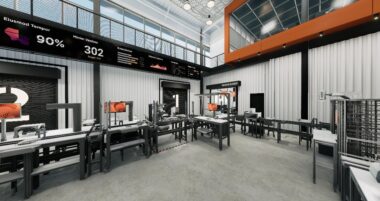
The factory tour began with a visit to the Today Room where participants heard about and saw the history of manufacturing. The tour then transitioned to the Tomorrow Room where, like something out of an amusement park, participants were invited to interact with a display table that showed advancements that are coming soon. From there, visitors moved into the heart of the tour where they saw M4.0 technology in action, and perhaps made a quick pitstop for a coffee brewed by the Smart Factory’s robotic barista.
The last stop on the tour was a visit to the control center where real-time data is synthesized and displayed related to The Smart Factory operation and Deloitte’s other immersive manufacturing experiences in Kyoto, Japan and Dusseldorf, Germany. The control center also served as an opportunity to showcase various systems within The Smart Factory’s ecosystem and how they work together.
A fully functional factory showcase: The Smart Factory @ Wichita is located on the Wichita State University Innovation Campus, and provides visitors with a completely immersive experience that brings smart manufacturing applications to life. Housed in a net-zero building, The Smart Factory is powered by a smart grid and manufactures science, technology, engineering and math (STEM) kits that are made of 100% recycled PET (RPET). The STEM kits, called Smart Rovers, are created in collaboration between Deloitte, Elenco Electronics and AWS, and will be donated to schools across the U.S. with the goal of inspiring the next generation of innovators.
M4.0 Discussion: The event concluded with a discussion featuring panelists Jason Bergstrom (Deloitte), Dave Kang (Dragos), Ken Hall (Siemens), Clint Schneider (AWS), and John Shorter (Infor). Moderated by Penelope Brown, the MLC’s senior content director, panelists discussed customer value, cutting through the noise, strategies for implementing and scaling M4.0, upgrading brownfield facilities, lights-out manufacturing, and the importance of communication, culture, data, and integration across the entire business.
As used in this document, “Deloitte” means Deloitte Consulting LLP, a subsidiary of Deloitte LLP. Please see www.deloitte.com/us/about for a detailed description of the legal structure of Deloitte LLP and its subsidiaries.
At IPG, A Relentless Focus on Business Value
MLC members tour IPG's plant in Utah and learn about the company's digital transformation journey.
For Intertape Polymer Group, a manufacturer of paper- and film-based packaging products, the last six years have been a time of significant growth – and change.
Revenue during that period doubled from $750 million to $1.5 billion at the end of 2021. With 10 companies brought into the fold through acquisition, as well as through greenfield plant expansion, IPG more than doubled its worldwide factory footprint. The company, with dual headquarters in Montreal, Canada, and Sarasota, Florida, now has operations in 34 locations, including 22 manufacturing facilities in North America, and approximately 4,000 employees.
But one of the most significant changes along the way, and one that will most certainly shape its future, is a digital transformation that began in 2018 that is now being rolled out in 10 of the facilities.
To see how IPG’s digital journey has played out in one of those facilities, approximately 70 members of the Manufacturing Leadership Council toured IPG’s Tremonton, Utah plant in April. Built in 1997, the plant makes shrink films such as StretchFLEX. MLC members saw how IPG uses data from plant floor equipment such as extruders to more rapidly identify and remediate problems; how it more effectively manages parts with an automated storage system called VIDIR; how it uses so-called “hackathons” and a digital-first mindset to problem-solve; and how it uses 3D printing to speed parts making.
In a briefing before the tour, Jai Sundararaman, IPG’s Vice President of Business Transformation, described why and how IPG undertook its digital transformation journey.
He said IPG was facing a set of issues as it contemplated its digital strategy – gains from lean manufacturing were plateauing, the workforce was ageing and retirements were underway, and the potential of new technologies was looming but not yet embraced. Moreover, digital was seen as a way to “homogenize” the company’s operating culture, an important requirement as a result of the acquisitions.
To prepare for the development of its digital transformation strategy, IPG undertook a series of explorations and activities, including studying 20 different technologies, attending more than 10 industry conferences, holding multiple technology summit with vendors, and engaging in more than 25 networking sessions with fellow MLC members, Sundararaman said.
The company then adopted a phased approach to digital transformation anchored on delivering business value.
Phase one of the digital transformation was designed to reinvent operational excellence for the digital era by, in particular, using its foundational Intertape Performance System (IPS) to closely align strategy and execution and “homogenize” the company’s operating culture.
“We have cracked the code in delivering bottom line results,” said Sundararaman, who is also a member of the MLC’s Board of Governors. “And we have uncovered three to five years of opportunities for driving sustained competitive advantage with operational excellence leveraging digital technologies and processes.
“So it was about raising the game to a higher level. I would characterize it as a ‘breaking the four-minute barrier’ moment. It was truly a watershed moment when the Tremonton team broke the yield numbers and sustained it for several months. Now, the records are starting to tumble down for other lines.”
Phase one also includes systematically up-skilling and retaining talent with digital and process knowledge. Phase two will be about driving revenue and margin growth by applying digital technologies at scale in other functions such as customer engagement, he said. And Phase three, which is probably a year away, will be about business model invention leveraging digital technologies.
One of the most significant changes had to do with how IPG thought about the process of problem-solving. Before its digital transformation, as it was explained during one of the tour stops, problem-solving was undertaken using a traditional sequence – hypothesis, questions, data, and answers.
The digital sequence, though, is different. It begins with big data, followed by exploration, correlations, and, finally, insights.
During an hour-long panel discussion following the tour, IPG plant officials answered questions from MLC members concerning data standards and analysis, measuring the return from M4.0, and how to get buy-in from employees and leadership teams for M4.0 initiatives, among others.
The panelists were also asked about the future possibility of achieving so-called light’s out status in a plant and the role of artificial intelligence in operations and continuous improvement.
“We have different camps with our own groups,” one panelist said. “However, we are very surprised at the tangible results we’ve seen in the initial stages of writing these algorithms and what’s possible with AI and how self-correction could become much more common.”
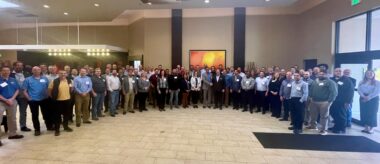
Inside BASF’s Customized Digital Training Simulators
Wherever your company is on its Smart Manufacturing journey, one stubborn issue remains: reducing human error. Whether it’s insufficient operating practices and procedural follow-through, equipment operation failures, or inconsistencies in shifts due to capability issues, the human component is a key feature of any reliability strategy for forward-thinking manufacturers.
In a virtual factory tour held September 8, MLC members got an inside look at how BASF Chemical Intermediates is implementing Voovio Technologies US Inc.’s Enhanced Reality training software simulation system to move both new hire and refresher training into the digital age.
BASF Chemical Intermediates, a division of German multinational chemical manufacturer BASF, manufactures approximately 600 products — including butanediol and its derivatives, amines, organic acids, polyalchohols, life science intermediates, solvents and OASE gas treatment solutions — which are sold to chemicals and plastics, agriculture, energy and resources, consumer goods, and nutrition and health customers around the globe. With six Verbund sites and 241 additional production sites in more than 90 countries, BASF’s products provide the building blocks for everything from shoes and clothing to construction, medicine, and fertilizers used in agriculture.
As it continues to move along its digitization journey, BASF is using data and digital technologies — including digital simulation training — to create additional value for its customers by increasing the efficiency and effectiveness of its manufacturing processes. BASF Chemical Intermediates partnered with Voovio to design customized digital training simulators to ensure its front-line operations and maintenance personnel are engaged, fully trained, and able to deploy the digital tools the company needs on its journal to increased operational excellence.
MLC members on the tour learned about the three main components of the Voovio simulation system: the digital Plant replica, digital procedure simulators where trainees can learn and practice procedures, and the field execution tool, which assists operators in the field as they execute the procedures they’ve learned.
The digital plant replica is built using real photographs — not animations — to create an immersive, realistic, interactive, and navigable environment that can be accessed by individuals on a computer, and shared virtually using standard video conferencing tools. Trainees can see everything in the environment and select components such as valves, pumps, and control panels to get a detailed view of each component, which are tagged and ID’d, and behave as they would in the physical environment to replicate the real functionality of the equipment. They can digitally “grab” and manipulate the components with a mouse or finger as they search for them, or from a searchable index. The simulators also offer enhanced views where the operator can overlay process flows and click on any piece involved in that workflow to see how it fits into the process. This unambiguous representation of the actual plan is useful for onboarding new operators and refreshing the knowledge of current workers.
The system also includes guided, learn, refresh and test modules that provide the replica, the procedure, and an action checklist so operators can focus on one action at a time in the procedure’s sequence. The guided module is like a virtual subject matter expert (SME) that enables technicians to learn and practice various procedures by doing them virtually. Once the operator has completed one step successfully, they get instant feedback. The system also includes knowledge snippets, which could be in any multimedia format, that include text, videos, job plans, plant drawings, and other bits of critical knowledge that may not be a formal part of the step but are accumulated bits of tribal wisdom new operations or maintenance technicians can access to learn from those who came before. The test module uses the same basic setup but provides immediate feedback to confirm whether the operator completed the step correctly. The system generates a test performance report and detailed activity log and also captures testing analytics for each trainee.
The field execution tool enables operators to take the training out of the computer screen and onto the shop floor. Using a tablet or approved digital device, employees can do a test run on the fly to ensure they know what to do before they do it.
BASF’s goal for implementing the simulation system was to update its operator training model to be faster, more interactive, self-directed, and be more systematic about capturing and transferring organizational knowledge from experienced operators to newer employees. The VOOVIO system is designed to reduce the time spent on-boarding with SMEs during traditional orientation, job shadowing, field demonstrations and written tests, while increasing competency, learning, and productivity.
In addition to reducing the time its SMEs spent training others by half and greatly accelerating the learning process, BASF has used the simulations to reduce unplanned events and startup delays, improve equipment reliability, reduce downtime, increase safety, and maximize profitability.
Nexteer’s Tracing System Drives Global Manufacturing Improvements
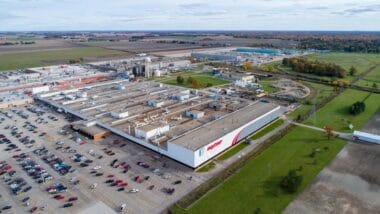 Nexteer Automotive is on a mission to make driving a car safer, more fuel-efficient, and future-focused through its production of steering and driveline safety-critical car and truck electronic and hydraulic power products. In addition to electric and hydraulic power steering systems, steering columns, and driveline systems, the company manufactures advanced driver assistance systems (ADAS) and automated driving-enabling technologies for more than 60 customers in every major region of the world, including BMW, Ford, GM, Toyota, and Volkswagen. Nexteer’s products complete the connection from the steering wheel to the wheels on the road.
Nexteer Automotive is on a mission to make driving a car safer, more fuel-efficient, and future-focused through its production of steering and driveline safety-critical car and truck electronic and hydraulic power products. In addition to electric and hydraulic power steering systems, steering columns, and driveline systems, the company manufactures advanced driver assistance systems (ADAS) and automated driving-enabling technologies for more than 60 customers in every major region of the world, including BMW, Ford, GM, Toyota, and Volkswagen. Nexteer’s products complete the connection from the steering wheel to the wheels on the road.
With software being a key component of most of Nexteer’s products, it’s no surprise that this multi-billion-dollar global business used a data-driven, holistic, and integrative approach to manage its complex global operations. Called the Digital Trace ManufacturingTM (DTM) System, it was created by Nexteer to provide a global architecture that connects and standardizes the thousands of data-producing components generated by its 27 manufacturing plants around the world.
In a virtual factory tour held on August 11, Manufacturing Leadership Council members got to see DTM in action. On the first stop on the tour, MLC members saw the production processes and traceability system at work at the company’s Plant 3 in its Saginaw, Mich., site, near the company’s headquarters in Auburn, Mich. The Saginaw facility, Nexteer’s largest, includes six manufacturing plants comprising 3.1 million square feet of manufacturing floor space where all the company’s core products are made. The site also houses a powerhouse and water treatment site, a global technical center, a test and validation center, and a test track. MLC members learned about the complexities involved in running a large-scale automotive component manufacturing plant, as well as how Nexteer has improved its manufacturing processes using the DTM system to connect data and maximize efficiency across the 150 operations required to manufacture its rack-and-pinion EPS products.
At the next stop, participants learned about how Nexteer uses data-acquisition tools to manage its business. Every time a new program is launched, a detailed process flow map is created for each step. This information is then shared with the equipment builders, so the machines are designed and programmed appropriately for the needed data processing, including what data will be sent to traceability and which processes use barcode scanners or other methods to track part serial numbers, such as RFID tags.
It’s one thing to have a large system collecting data — and it’s another to be able to use that data effectively. Nexteer uses intelligent manufacturing, big data, and local technology to collect, move, store, notify and summarize information for its global traceability system. The system, which is used in all the company’s plants to track information from thousands of machines daily, collects cycle time information. If there’s a fault, it collects and stores information including operation error codes and a description of all the pertinent information.
The data displays summary information for current station status directly on the floor on an hour-by-hour basis. It also makes historical information available for problem-solving purposes and provides automatically generated daily and weekly reports on all facets of the operation that are sent to cross-functional groups for awareness and problem-solving. Flawless materials control and delivery also is critical for production line efficiency, and Nexteer’s system can track material from receiving and shipping through the production line with single-box precision.
Not only does the system allow them to eliminate discrepancies by tracking the movement of each piece of material with high precision, it also eliminates the need for physical inventory processes. The ability to understand the manufacturing process outputs, and how these outputs affect your business goal, is extremely powerful. Nexteer uses its Center of Analysis (COFA) to communicate and correct any issues that arise.
Nexteer’s innovative approach to integrating design and manufacturing systems, from DTM to COFA, enables the company to deliver a dynamic, comprehensive view of its global manufacturing operations on a minute-by-minute basis — and benefits the company’s employees, customers, and shareholders.

IBM’s digital journey is keenly focused on building a cognitive enterprise that embraces an agile culture of innovation, combined with a client focus that leverages exponential technologies to deliver greater value. IBM executives on the MLC’s recent virtual tour of its high-end storage manufacturing plant in Vác, Hungary, described it as, “a mission of relentless reinvention.”
The April 2021 tour showed Manufacturing Leadership Council members how the company brings that mission to life to maximize its complex supply chain. And it is a complex one: IBM has an operational presence in more than 170 countries around the globe, with its manufacturing sites in strategic locations, serving hundreds of thousands of customers with hardware deliveries and service maintenance. To meet the high configurable product demand, the IBM supply chain operates in a hybrid model of build-to-plan and build-to-order. IBM also collaborates with suppliers across its global, multi-tier supplier network.
For IBM, the enterprise IT needed to drive rapid innovation is based on an Open, Hybrid Cloud and AI-embedded platform that incorporates the company’s own technology, including IBM’s Watson AI capability, to provide data insights as well as manage its supply chain on a daily basis. IBM AI technology has capabilities to co-create and manage business transformation through visual recognition technology, acoustic analytics, industrial augmented reality, IoT, blockchain, and digital twins, to power its infrastructure, elevate its automation capability, maximize equipment lifespan, and enable remote support.
But it also takes IBM’s team of passionate and committed supply chain professionals to apply these emerging technologies to operations with both speed and agility to achieve the company’s goal of relentless reinvention.
From piloting new technologies to becoming a more cognitive enterprise, automating core processes, and leveraging a multi-source more resilient supply chain, IBM is committed to the idea of innovating anywhere/use everywhere data insights to improve its processes, people, and technology.
Adopting Advanced Technology to Drive Digital Transformation
The Hungary plant tour exemplified how IBM combines collaboration and processes with automation, AR, AI, IoT, and data visibility to achieve a seamless, agile operation. Supported by the company’s Operations and Supply Chain Execution teams around the world, some of the key technologies IBM executives highlighted included:
Supply Chain Advisor: Being able to access forecast, order, supply, inventory, and engineer data in real time across all manufacturing geographies and functions is critical to the company’s decision-making process. IBM uses a platform powered by Watson and cognitive AI capabilities to provide instant data insights that its worldwide supply chain professionals can use to monitor and assess global and local supply and demand information, as well as parts numbers and component details. There are three main Advisor systems: Cognitive Supply Chain Advisor 360, Quality Advisor, and Test Advisor, which enables the IBM Supply Chain to mitigate potential issues before they reach critical mass and to adjust workflows as needed.
Collaborative Robots: The company also uses collaborative robots integrated with AI visual recognition to help maintain consistency in the quality inspection process, as well as precision in the assembly process. This allows employees to concentrate on more complex and higher value tasks.
Acoustic Insights: IBM infuses AI and automation into the acoustic arena as well. It trains AI models to recognize sounds that could indicate a potential machine failure so it can be mitigated before a failure occurs. Both of its visual and acoustic insight products were developed in house.
Augmented Remote Assistance: When the company had to minimize the physical interaction of employees due to COVID-19, it implemented an augmented remote assistance solution — a mobile app and web interface that workers can use to report problems to remote experts. The experts can then evaluate and provide step-by-step visual instructions through a live audio and video stream. This has streamlined response and repair times. Some manufacturing operations staff also are equipped with a tablet to facilitate collaboration and improve knowledge sharing through virtual interaction.
Blockchain: In the Hungary plant, IBM has used blockchain technology to track parts in collaboration with its suppliers throughout the lifecycle of a product. This makes it easy to track and screen for faulty parts, and that data can then be shared with suppliers. IBM also uses Blockchain for logistics tracking and customs clearance to share key documents and in-transit information across the network with suppliers and carriers to digitize the data and improve compliance and cycle time through customs.
Track & Trace IoT: A key technology to monitor shipments and possible incidents /in-transit delays. IBM is using Track & Trace IoT Smart Sensors and the Mechanical Tilt indicator attached to outbound and inbound shipments to provide real-time data on location, temperature, humidity, and shock alert.
The Human Factor
IBM also enables its operators to learn cross-functionally so they can move from one area to another, based on demand. The flexible workforce, combined with its flexible platforms, enabled IBM to deliver on customer demands quickly and successfully during the perfect storm of disruption that was COVID-19. The supply chain team, augmented by data insights, can better understand situations and receive recommendations. The interface’s use of natural language also made it quicker, easier, and more intuitive to collaborate.
Digitizing the assembly line with visual and acoustic insights through augmented reality and AI not only speeds up processes and allows support to be provided remotely, it also allows employees to concentrate on value-add tasks in their workflows, enhancing flexibility, agility, and a culture of innovation.
Yet IBM executives do not believe the company is anywhere near the end of its digital journey. As it continues to it use Watson’s AI capabilities to streamline its cognitive supply chain, increasing amounts of data available from IoT devices across the network will help further enable IBM’s AI capability to grow and scale in the future.
IBM is confident that this approach to digitally centered, continually improving processes, combined with its investment in training in both technical and soft skills, is preparing the company to act with greater speed and agility whenever and wherever the next disruption might occur.
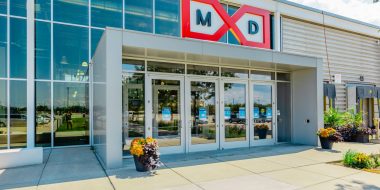
More than 35% of cyber espionage attacks in the United States are targeted at manufacturers, more than any other business sector, according to a recent U.S. national defense industry association study.
To ward off today’s determined hackers, manufacturing companies of all sizes must now urgently analyze and protect both their internal operations, and their entire supply chain ecosystem, to prevent malicious disruption, the theft of intellectual property, data ransom attempts, or competitive denials of service.

As manufacturers accelerate the deployment of digital technologies to modernize and interconnect their facilities and supply chains, they also open up new risks for cyber-attacks, stressed Chandra Brown, CEO of MxD, during a recent virtual plant tour for Manufacturing Leadership Council members.
Smaller companies are especially at risk, Brown added. “Hackers are very aware that there may be more vulnerabilities in smaller companies, and their attack vectors on large companies can start with targeted attacks on the smaller companies within their supply chain.”
And a cyber-attack can be fatal: 60% of small companies go out of business within six months of an attack.
MxD, which was designated as the National Center for Cybersecurity in Manufacturing by the U.S. Department of Defense in 2018, took virtual plant tour participants through two cybersecurity demonstration areas within its 22,000-square-foot Innovation Center in Chicago to highlight what can be done.
Build a Cyber Wall
MxD’s framework for cyber security is designed to address the five major cyber security elements published by the National Institute of Standards and Technology (NIST): identify, protect, detect, respond, and recover.
First up on the tour was MxD’s Cyber Wall, which is configured to help manufacturers understand the vulnerabilities of, and required protection for, Operational Technology (OT) systems, which are vulnerable because they typically are based on microcontrollers or PCs that are increasingly connected to local area or wide area networks. As MxD demonstrated the Cyber Wall, they provided the following tips for meeting the first two NIST elements:
Identify: If you don’t know how many devices you have connected to your network, find out. There may be more than you think — the average could top 4,000 in a 100,000-square-foot factory. It’s also key to know what operating system you’re running, how often it’s updated, and if it has the most recent security patches.
Protect: The next brick in the cyber wall is installing software on each device that will keep you updated on whether it’s connected and, if so, if it’s running the latest, most secure software version.
To illustrate how the Cyber Wall works, MxD uses two identical PLC industrial control systems, each attached to a unique network of PCs, routers, switches, and firewalls. One is protected with “whitelisting,” or application control, while the other is not. Rather than trying to keep a list updated with malicious software that is constantly propagating, application control only allows software that is expressly approved. When a USB drive loaded with an unknown malicious executable file is loaded into each system, the protected system blocks the executable file since it is an unrecognized application, while the unprotected system allows it to start malicious activity.
All it takes is one person to plug in a suspect USB or click on a phishing email to set a hacker loose in the system. That’s where network segmentation comes in. The MxD protected system is contained within its own segmented network, with access controlled by a firewall that manages both internal and outside access, so if a hacker does break in, you can keep any damage from spreading to other areas within the facility.
Erect a Cyber Platform
To address the remaining three NIST cybersecurity framework segments — detect, respond, and recover — MxD demonstrated its Cyber Platform. Like the Cyber Wall, the demonstration was based on programmable logic controllers used to power the OT control system, in this case to operate an array of pumps and values to direct liquid through separate clean and wastewater pipe networks. It includes 20 sensors to monitor temperature, flow rates, pressures, and other factors.
Detect: Like most factories, the MxD cyber platform uses an intrusion detection system (IDS) to monitor network traffic and note an anomaly, such as when a hacker tries to take over the PLC. It then alerts appropriate personnel to investigate.
Respond: The most important thing is to have a plan, including official, easy-to-locate policies and procedures. These generally include 1) bringing the system to a safe halt; 2) disconnecting the affected system from the network to keep the corruption from spreading; 3) communicating the incident to the proper internal and, if appropriate, external personnel and law enforcement; 4) performing a root cause analysis to determine how the problem happened and how to mitigate similar incidents in the future.
Recover: While the details will vary across industries, a recovery plan generally should include 1) having a documented plan on how to bring the systems back online — manufacturers should have software backups of all systems, including OT, so they can revert to the last backup that happened before the hack; 2) review the root cause analysis to determine what corrective actions are needed; 3) bring the system back online. MxD engineers did a failure modes and effects analysis (FMEA) when designing the Cyber Platform to determine potential hacker targets and worst-case scenarios ahead of time so they could build recovery mechanisms into their systems. Even if you have an older legacy system, it’s worth doing an FMEA to help drive effective recovery plans, they said.
The goal of manufacturing security is “to operate securely, not to secure operations,” stressed the MxD panel at the end of the virtual tour. The goal always has to be to ensure continuous production, not to be 100% secure.
As cyber threats evolve, manufacturers must also evolve the tactics they use to thwart those threats. But don’t expect to ever be able to thwart them completely. The most important thing, concluded MxD, is to have a plan in place to get back up and running before too much damage is done.

Teaching Analog Systems Digital Tricks
Posted by Sue Pelletier | Jan 14, 2021 | Plant Tour reviews, Ideas & Insights
Manufacturing Leadership Council members recently took a virtual tour around MxD’s Innovation Center in Chicago to learn how to integrate digital manufacturing technologies using existing legacy equipment in ways that can help increase agility without breaking the bank or getting buried in a data landslide.
MxD’s nearly 100,000-square-foot Innovation Center in Chicago is a neutral space for manufacturing experimentation and demonstration housing millions of dollars in consigned and purchased equipment that its 300 partners, including companies such as Siemens and Autodesk, use to conduct research and implement projects ranging from augmented reality to advanced simulation techniques. To date, it has invested about $100 million in 60 projects on behalf of manufacturers of all sizes and stages in their digital journeys.
MxD (Manufacturing x Digital), is a six-year-old nonprofit that works in partnership with the U.S. Department of Defense and is one of a network of 16 advanced manufacturing institutes around the country. Its goal is to improve U.S. competitiveness in the manufacturing sector through innovative R&D projects, workshops, and testbeds in the areas of predictive analytics and maintenance, agile and resilient supply chains, cybersecurity, digital fingerprinting, augmented reality, and digital twins.
It’s where manufacturers go to forge their future.
The MLC’s virtual tour included six stops. Because MxD usually hosts live tours and meetings at the center, the first stop outlined some of the health and safety measures MxD has implemented, including touchless thermometer checks, automated doors, masks, physical distancing cues, one-way entrances and exits, sneeze guards, hand sanitizer stations, updated air circulation, and UV-sanitized safety glasses. All measures are in compliance with the CDC and Illinois Department of Health guidance. All visitors and other stakeholders are told about the policies ahead of time.
The other five stops showcased examples of how MxD brings hard-to-visualize applications to reality in a factory setting. It has several testbeds throughout its 22,000-square-foot factory floor that are used for proof-of-concept testing of new technologies, integration and testing of existing technologies, and for educating and demonstrating various digital manufacturing concepts.
In one example, tour participants virtually walked through the process MxD uses to produce small souvenir tokens it gives to facility visitors, using its discrete manufacturing testbed, which uses typical factory equipment, to show how it integrates data collection systems and closed-loop analytics to continually improve its processes.
MxD commonly showcases products from several service providers as well as open-source products to provide a range of perspectives. Participants were also shown how MxD’s test beds integrate older analog equipment into digital systems, using a simple, inexpensive proximity sensor to sense whether the token is oriented correctly. Designed and built-in house, this unit cost less than $600, including all the mechanics, electronics, and control system.
Instead of using a plug-and-play commercial system, MxD also had one of its summer interns design and build the washing station used to rinse the coolant from the CNC process to help foster a better understanding of the higher tech skills tomorrow’s workers will need.
Another stop on the tour walked participants through a visual digital retrofit project MxD is doing in partnership with the University of Cincinnati and several MxD members. The goal is to convert analog information from older equipment into digital information that can be communicated over IoT networks and used in a variety of digital manufacturing operations. The project demonstrated how manufacturers can accomplish this without having to make large capital investments in new equipment by using vision-recognition hardware and software.
The project uses an inexpensive web cam to non-invasively record and digitize data from a simple analog air-pressure gauge – an approach that can be used for other pieces of legacy equipment — with the results fed to a PC which processes the visual information and displays the output on a monitor, including the real-time digital conversion. The PC then sends the information to the IoT network for alerts, analytics, or other digital use cases. This project was developed in partnership with Opportunity Works, a program to help young adults in the Chicago area by placing them as interns in local businesses to learn skills in manufacturing, IT, and supply chain. In this case, they learned how to use 3D printers to fabricate the fixtures in house and helped install the hardware in the factory for testing.
Another virtual stop on the tour showcased how manufacturers can get the benefit of digital technology while continuing to use legacy equipment, such as a type of manual milling machine that’s been in use since the 1930s. MxD undertook the project with Georgia Tech and several MxD members to inexpensively retrofit this type of machine with digital sensors. This specific use case identifies when machines are in operation by installing an industrial current sensor on the power leads to the spindle motor to monitor the current load and communicate the sensor’s output. A $19 microcontroller, simple enough to be programmed by a high school intern, was also used in the project. The total cost for the sensor, panel controller, and power supply was less than $150.
During the following discussion and Q&A session, facilitators and panelists emphasized a few key learnings from the MxD experience:
- The goal isn’t always about gathering as much data as possible, but more about ensuring you collect relevant data that will address gaps and problem areas in the process.
- Not everyone needs an advanced degree or a lot of training to make innovation happen. If the interns and high school and community college students MxD works with can adapt to the needs of digital manufacturing, it’s a good indication that you can educate and upskill your existing workforce to handle the digital transformation.
- The cloud is the big equalizer, enabling everyone to collaborate remotely regardless of location, as has been seen in practice during the COVID-19 pandemic.
- Don’t try to eat the digital elephant all in one bite. Start small and demonstrate the ROI. Once others see the value of what you’re doing, you will start gaining internal advocates who will champion new digital ideas by building on those early successes.
- Be transparent. Make sure that folks in the company know what you are doing, why you’re doing it, and how it’s going to help them, and the company, move forward.
Footnote: Further details: mxdusa.org
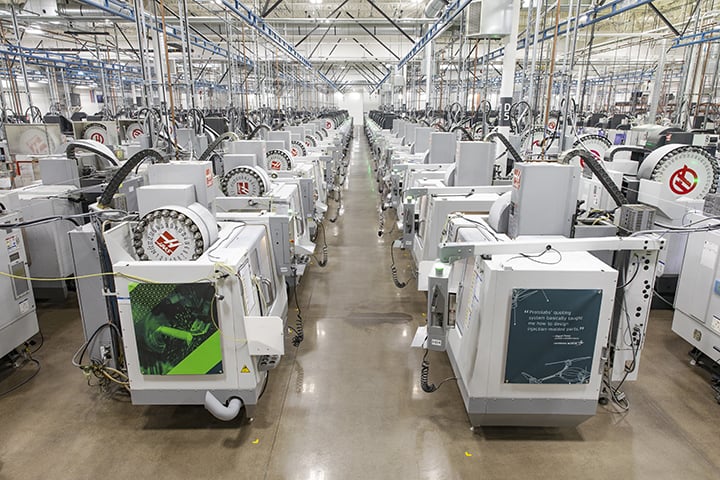
Only July 22, the Manufacturing Leadership Council hosted its first-ever virtual plant tour in conjunction with Protolabs, a manufacturer of custom prototypes and on-demand production parts. More than 300 attendees joined the tour, which “visited” six of Protolabs’ U.S. facilities across three cities.
Protolabs was founded by Larry Lukis in 1999 as a rapid injection molding business in Maple Plain, MN. It was originally called Protomold. Frustrated with not being able to get prototypes quickly, he decided to start his own business that would begin with a customer’s problem and then work backwards to automate and scale the necessary solution. The company later expanded into CNC machining services, and opened facilities in Europe and Japan.
CEO Vicki Holt joined the company in 2014, and the company then acquired Fine Line Manufacturing to add 3D printing to its service portfolio, followed by Rapid Manufacturing for sheet metal fabrication. Today, Protolabs is an end-to-end digital manufacturer of custom components with locations in three states and seven countries.
Protolabs has developed a robust ecommerce platform where customers can upload 3D CAD files 24/7 and typically receive an interactive quote within a few hours. The customer receives a digital twin of the part for their inspection, and they can work with Protolabs’ engineering team if they want input on their designs.
The tour began at the company’s injection molding facility in Rosemount, MN, which processes more than four million parts per month. This segment of the tour was led by Gurvinder Singh, Protolabs’ Global Product Director, Injection Molding. Singh said that the standard lead time for a new mold is 15 days, but with rush options a design can often be delivered within one day. In addition to the Rosemount facility, Protolabs also has another injection molding facility in Plymouth, MN.
Rosemount has 125 presses that typically handle part run volumes from 1-25,000 parts, but sometimes make more than one million parts. Protolabs will store customer molds to allow for follow-on parts and offers additional finishing services like adding textures or inserts or printing logos on parts. Injection molding services were a critical element to Protolabs’ COVID-19 response efforts as they allowed the company to make parts for ventilators, face shields, test kits, and masks.
From there the tour went to the CNC machining facility in Brooklyn Park, MN, led by Holt, who is a member of the MLC’s Board of Governors and a member of the Board of Directors of the National Association of Manufacturers, the MLC’s parent. With 380 machines running in the facility, noise levels became a problem so the company installed acoustic insulation in the ceiling to minimize how long sound bounces, taking the sound down several decibels. Protolabs further enhances safety at this facility with a fall arrest harness system for employees who are working on top of mills. The company has an enhanced machining facility in Nashua, NH, that allows for more complex parts via 3-5 axis machining as well as lathe and wire EDM.
The company tries to ensure that it will have enough capacity to ship orders on time every time. When capacity nears its peak, Protolabs brings more machinery online to handle the additional demand. The CNC facility is automated through machine programming, allowing for highly repeatable processes and high quality. Other machining-related services offered by Protolabs include turning, drilling, finishing, and quality control.
The next stop on the tour was the Protolabs 3D printing facility in Raleigh, NC. Led by Rob Bodor, VP and GM, Americas, it is believed to be the largest 3D printing contracting manufacturing facility in North America. The company has the capability for 3D printing with both plastics and metals and can work with a broad range of materials and part sizes. There are 70 stereolithography machines in a range of sizes that can build features as fine as a human hair. Protolabs deploys stereolithography (SLA), selective laser sintering (SLS), direct metal laser sintering (DMLS) PolyJet, Multi Jet Fusion (MJF), Carbon DLS, , technologies to make a variety of parts rapidly.
The final stop was at Protolabs’ sheet metal fabrication location in Nashua, NH, again led by Holt. The plant is broken into two sections, one focused on complex assemblies and the other on speed and scalability. The operation for complex assemblies includes laser cutters, punch presses, press brakes and other hardware, and material selections include aluminum, stainless steel, cold rolled stock, galvanized steel, and brass and copper. Every order is cut from 40×40 blank sheet to reduce waste.
Moving to the second area of the sheet metal plant designed for simpler parts, this plant is built around express work cells, each with their own laser cutter, press brake, punch and hardware station, set up in a cellular layout with an operator who is trained across all of the equipment in the cell. Each day the operators meet in a daily huddle to cover performance metrics, and they contribute to idea boards aimed at continuously improving how the cell works.
During the attendee Q&A following the tour, Holt described their end-to-end digital thread and how they manage all business processes in the same system, so that every piece can connect and talk with every other piece. This digital connectivity allowed Protolabs to respond rapidly in service to its customers at the beginning of the pandemic crisis, especially medical customers.
Holt also discussed the company’s quest to build further resilience and agility into its supply chain in order to always be crisis-ready. While the company is a global business, it operates off of regional supply chains. Holt also praised the responsiveness and resilience that digital technology can introduce to the supply chain during times of crisis.
A complete recording of the plant tour is available here. Watch for notifications from the MLC regarding future digital plant tours.
“Watch the pennies and the dollars will take care of themselves.”
While that old saying might be a maxim for household budgeting, it also could describe Intertape Polymer Group Inc.’s (IPG) approach to developing an award-winning energy management program. Its essence: turn an accumulation of low-value opportunities into a gold mine of high-value savings.
The Manufacturing Leadership Council hosted a tour in February at IPG’s Danville, Va., facility, the company’s flagship plant out of 22 in North America. IPG also operates four plants in Asia and one in Europe and houses its corporate headquarters in Montreal, QC and Executive headquarters in Sarasota, FL. Their products include a variety of paper and film-based pressure sensitive and water-activated tapes, polyethylene and specialized polyolefin films, protective packaging, engineered coated products, and packaging machinery. IPG, with $1.2 billion in revenue in 2019, is the second-largest tape manufacturer in North America.
The company considers the Danville manufacturing facility to be “two plants under one roof” with one part of the facility focused on carton sealing tape manufacturing and the other part focused on stretch film manufacturing. Each has its own compressor room and monitors its energy usage separately. There are more than 300 employees at the 600,000-square foot manufacturing facility and adjoining distribution center.
IPG’s achievements in energy savings have earned the company many accolades, such as being recognized as an Energy Star partner since 2009 and being named a Sustained Excellence Partner of the Year every year since 2016. The IPG Danville facility was named a NASCAR Green E3 Challenge Award winner in 2016 and won Industry Week’s Best Plants award that same year. The IPG Danville facility has realized $5 million in energy benefits through a variety of continuous improvement activities including favorable contractual services.
For these achievements the company has utilized both internal initiatives and outside expertise. Externally, the company worked with Leidos for a turnkey energy management system (EMS) that offers visibility into energy usage at a machine and line level with the ability to track trends over time. The findings discovered from that system led to adoption of new practices for staggered equipment startup procedures to minimize energy demand, as well as improvements in equipment scheduling. Real-time energy usage data is displayed on an LED board within the plant (one for the tape operations side and one for the stretch film operations side). The EMS led to approximately $339,000 in savings in its first year after installation.
Internally, IPG has found great success through its employee-led energy treasure hunts. This is a two-to-three-day Kaizen event where 15-20 participants from different divisions of the company go into the facility equipped with an air leak gun, a FLIR (thermographic) gun to detect temperatures, and a thermometer on the hunt for low-cost and no-cost energy savings opportunities. Each team is given a directional focus, such as facility utilities, chillers/boilers/HVAC, or machine and process operations. Their findings are reported to management, and there is recognition for the team afterward and follow-up for how their findings were addressed.
While it might seem that all problems would be solved after holding just a few of these treasure hunts, IPG says that they did their first treasure hunt in 2013 and still identified $100,000 in potential savings opportunities for future years from treasure hunts conducted in 2019, brought on by continuous changes in people, equipment, and plant configuration.
The company has also realized notable savings through its efforts in curtailing air leaks and improving air flow from its compressors. While IPG added new compressors to its facilities, it initially did so without updating the piping or other infrastructure that supported airflow. An airflow survey found turbulence created by piping bends and kinks, inefficiencies in the compressor system, and many air leaks. Improvements included installation of a demand expander, and eventually isolating two separate compressor rooms to minimize disruptions in the event of an outage. As a result, the plant can now run its compressed air system at lower horsepower with increases in the amount of air in the system. Similar to its energy treasure hunts, the company also deploys a three-person air strike team to regularly detect and correct air leaks throughout its facilities.
Up next, IPG has its eye on further improvements in sustainability, including reductions in its carbon footprint and landfill waste. It is also in the nascent stages of creating safety treasure hunts that mimic its energy savings program.
For companies looking to create their own energy management programs, IPG suggests using the many free tools available online through Energy Star; comprehensive information is available regarding how to organize and execute energy treasure hunts. They also suggest staying informed on the state average price of electricity to ensure utility rates are at or below average, data that is published online by the U.S. Energy Information Administration. If rates don’t fall within that range, the company suggests contacting the local utility provider to determine if lower rate class options are available.